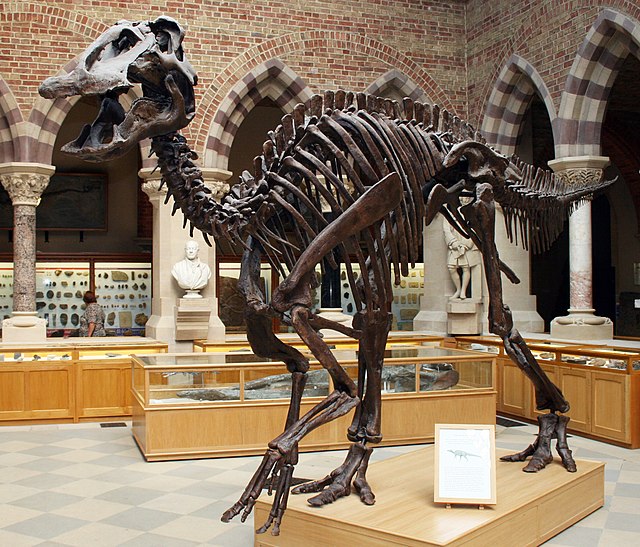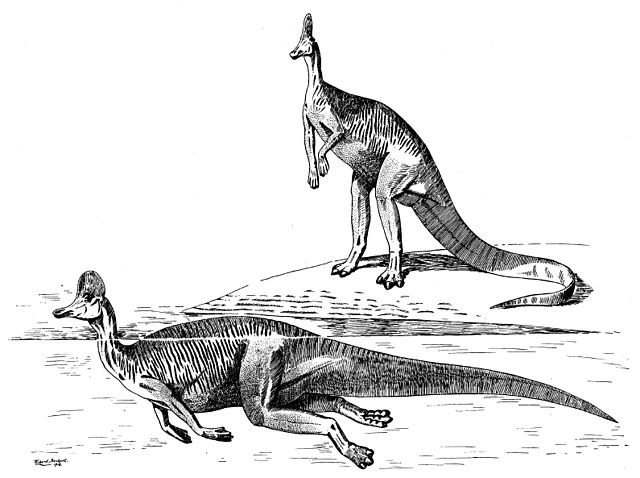Edmontosaurus, with the second species often colloquially and historically known as Anatosaurus or Anatotitan, is a genus of hadrosaurid (duck-billed) dinosaur. It contains two known species: Edmontosaurus regalis and Edmontosaurus annectens. Fossils of E. regalis have been found in rocks of western North America that date from the late Campanian age of the Cretaceous period 73 million years ago, while those of E. annectens were found in the same geographic region from rocks dated to the end of the Maastrichtian age, 66 million years ago. Edmontosaurus was one of the last non-avian dinosaurs to ever exist, and lived alongside dinosaurs like Triceratops, Tyrannosaurus, Ankylosaurus, and Pachycephalosaurus shortly before the Cretaceous–Paleogene extinction event.
Skeletal restoration of the E. annectens (then Claosaurus) holotype, by Othniel Charles Marsh
E. annectens paratype YPM 2182 at the Yale University Museum, the first nearly complete dinosaur skeleton mounted in the United States.
AMNH 5060: an E. annectens with skin impressions
Specimen CMNFV 8399, holotype of E. edmontoni, now thought to be a young E. regalis.
Hadrosaurids, or duck-billed dinosaurs, are members of the ornithischian family Hadrosauridae. This group is known as the duck-billed dinosaurs for the flat duck-bill appearance of the bones in their snouts. The ornithopod family, which includes genera such as Edmontosaurus and Parasaurolophus, was a common group of herbivores during the Late Cretaceous Period. Hadrosaurids are descendants of the Late Jurassic/Early Cretaceous iguanodontian dinosaurs and had a similar body layout. Hadrosaurs were among the most dominant herbivores during the Late Cretaceous in Asia and North America, and during the close of the Cretaceous several lineages dispersed into Europe, Africa, and South America.
Hadrosauridae
Illustration of Trachodon mirabilis teeth
From the mid 19th century through much of the 20th century, hadrosaurs were considered aquatic animals which subsisted on soft water plants
Skeleton of Maiasaura posed with a nest; the naming of this genus was one of numerous important developments in the Dinosaur Renaissance








